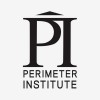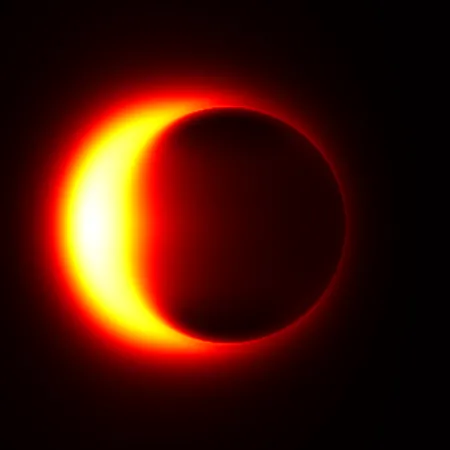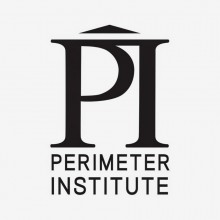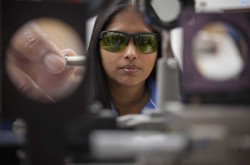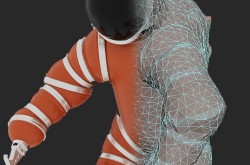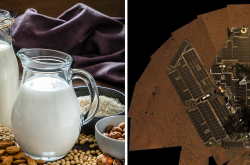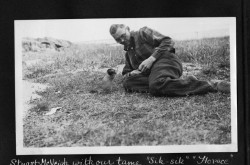Testing General Relativity with Black Holes
This article was originally written and submitted as part of a Canada 150 Project, the Innovation Storybook, to crowdsource stories of Canadian innovation with partners across Canada. The content has since been migrated to Ingenium’s Channel, a digital hub featuring curated content related to science, technology and innovation.
Perimeter researchers use measurements from the Event Horizon Telescope to test Einstein’s theory with the supermassive black hole at the centre of the Milky Way.
If Einstein’s theory of gravity has any loopholes, the best way to find out may be to look carefully at regions where gravity is its most extreme: black holes.
Thankfully, the Event Horizon Telescope (EHT) – a global array of interconnected radio telescopes – offers the incredible sensitivity and resolution to do just that.
A research team led by Perimeter Institute’s Tim Johannsen and Avery Broderick oposed a new method for using observations of Sagittarius A*, the supermassive black hole at the centre of our galaxy, to determine whether general relativity’s predictions hold up or fail.
The key to their research, published recently in Physical Review Letters, is a tell-tale “shadow” of the black hole, silhouetted against the superheated glowing material falling past its event horizon. The shape of that shadow, if general relativity’s predictions are correct, should be almost perfectly circular.
But if Einstein’s predictions are off and general relativity is not correct, the shadow could have an irregular shape. “That would be a smoking gun for a violation of general relativity,” said Johannsen, a postdoctoral researcher at Perimeter Institute and the University of Waterloo. “So that is the effect we’re exploring here.”
What they found from examining nearly seven years’ worth of EHT observations is that general relativity holds up quite well. “We were able to place tight constraints on a potential deviation from general relativity,” said Johannsen.
Broderick, an Associate Faculty member at Perimeter and the University of Waterloo, said researchers expect to expand on this work with even greater precision as more telescopes become part of the EHT array in the next year.
“What this work implies is that the era of high-precision strong gravity research has begun,” Broderick said.
Transcript
00:09
The Event Horizon Telescope is a global array of radio telescopes spread across
00:15
the earth. All these telescopes are linked together and that allows us to
00:19
achieve absolutely unprecedented levels of both resolution and sensitivity.
00:22
Despite their enormous masses black holes the ones at the centres of
00:28
galaxies that are a billion times as massive as the Sun are very tiny objects.
00:33
We don't see the black hole directly -- we see the stuff that is surrounding it.
00:38
There's material in the vicinity rushing headlong to fall across the horizon and
00:43
that material shines and silhouetted against that shiny material we see the
00:48
tell-tale sign of a horizon -- a black shadow. In general relativity the shape of
00:54
the shadow is almost always nearly circular. Encoded in that shadow is the
00:59
shape of space-time around black holes. In general relativity
01:04
black holes are very simple objects characterized by only a handful of
01:08
numbers and therefore their shadows are also simple shapes but if general
01:13
relativity was not the right theory of gravity -- if Einstein was wrong -- the
01:17
shadows could be complicated shapes and that is the signal we are going after.
01:22
Our prime target is the supermassive black hole at the center of the Milky
01:28
Way we call it Sagittarius A* or just short SagA*. Sagittarius A*
01:34
is the four million solar mass behemoth at the center of our galaxy and
01:39
that makes it the closest supermassive black hole to Earth.
01:43
it also makes it the optimal target for the Event Horizon Telescope. It has a
01:47
diameter of about 50 micro arcseconds so imagine you were to cut the moon in
01:52
235 million slices then the thickness of one of these slices would be about the
01:58
diameter of the shadow. This is super super tiny and yet we can resolve it. In
02:04
this research we considered what would happen if we squish the space-time say
02:08
instead of a spherical peach maybe it looks more like a pear or a pizza.
02:13
Changing the shape of the space-time changes the shape of the shadow cast by
02:17
the horizon and using seven years of observations
02:20
taken by the Event Horizon Telescope already we can say that general relativity
02:24
does a pretty good job that it really can't look like a banana or pizza it
02:29
could maybe look like a pear.
02:30
however starting in 2017 many more stations will be part of the Event
02:36
Horizon Telescope and the sensitivity and the resolution will increase
02:40
dramatically and instead of telling apart peaches and pears we're going to
02:44
be able to see the hairs on the peach. So we have demonstrated both with existing
02:49
data and with forthcoming data that we are able to place tight constraints on a
02:54
potential deviation from general relativity we're also able to measure
02:58
the spin of Sag A* very precisely as well as its orientation in the sky.
03:02
What this work implies is that the era of high-precision strong gravity
03:06
research has begun, that is with radio telescopes we're going to not only be
03:12
able to watch the exciting dramas of gas and fields accreting onto black
03:16
holes but study the underlying stage set by the space-time itself.


